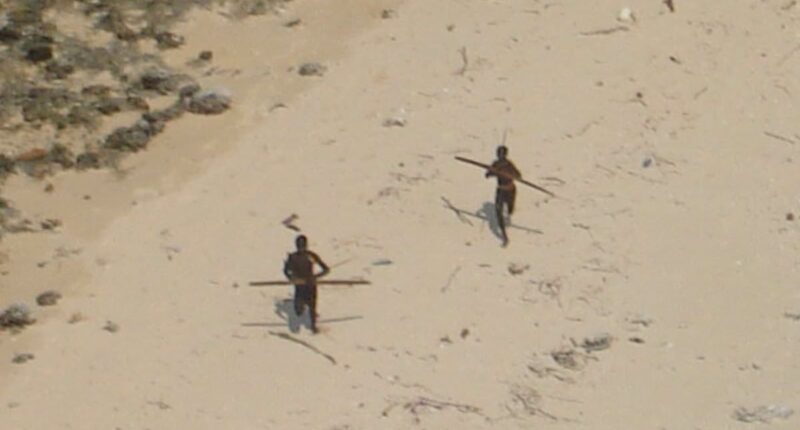Share this @internewscast.com
Influencers attempting to engage with uncontacted tribes pose an increasing danger to these groups’ existence, a charity has cautioned.
At present, 196 uncontacted Indigenous communities inhabit forests worldwide, each with distinct languages, cultures, and territories.
However, a recent study from Survival International, an Indigenous rights organization based in London, reveals a rising trend of influencers encroaching on these territories, intentionally seeking interactions with the tribes.
Sophie Grig, the Asia Campaigns Director for Survival International, shared with the Daily Mail, “We’ve observed an escalating threat coinciding with the proliferation of social media, the emergence of influencers, and the avenues for monetization this creates.”
Grig highlighted that these so-called adventurers are increasingly attempting to boost their social media clout by undertaking perilous and reckless endeavors that endanger uncontacted populations in their quest for fame.
She further noted that such pursuits are fraught with danger not only for the tribes but also for the adventurers and influencers themselves. A stark example is the 2018 incident involving American missionary John Chau, who was killed while trying to approach one of the world’s most secluded Indigenous communities on North Sentinel Island, near India.
The report also explained how ‘adventure-seeking tourists’, influencers’ and ‘aggressive missionaries’ are becoming a growing threat to these groups as they introduce diseases to which isolated tribes have no immunity to.
Grig said that any contact with uncontacted people is ‘incredibly dangerous’ because tribes who haven’t had any regular contact with the mainstream society ‘don’t have the same immunity to common diseases that you or I might have, and so it’s really common for devastating epidemics to rip through uncontacted people’.

Influencers trying to reach uncontacted tribes are a growing threat to their survival, a charity has warned. US social media personality Mykhailo Viktorovych Polyakov was arrested this year for trying to contact the Sentinelese

This rare picture, shot from a helicopter by Indian Coast Guard, shows Sentinelese tribesmen on North Sentinel Island on the Andaman and Nicobar Islands
‘One small minimal contact could be fatal, and it’s not uncommon for 80 percent of a community to be wiped out’, she added.
The charity also explained how India’s North Sentinel island, which is home to the ‘the most isolated indigenous people in the world’, was becoming increasingly targeted by adventure influencers and illegal fishers ‘who steal [their] food’ and boast about making contact with the tribe.
It mentioned the case of Mykhailo Viktorovych Polyakov, an American influencer who landed on the island and tried to contact the Sentinelese after allegedly offering them ‘a can of ‘Diet Coke and a coconut’ earlier this year.
He was arrested by Indian authorities after he breached a law designed to protect the tribe.
He remains on bail and could face a lengthy prison sentence.
The group also condemned anthropoligists and filmmakers for deliberately seeking uncontacted people ‘as an object of study…without thought for the potentially devastating consequences’.
It gave the example of David Attenborough, who in 1971 joined an Australian colonial government patrol in Papua New Guinea in an attempt to contact and film an uncontacted tribe, calling the moment ‘a reckless encounter which could easily have passed on deadly pathogens to which the[tribe] had no immunity’.
Survival’s research concludes that half of these groups ‘could be wiped out within 10 years if governments and companies do not act.’
The report identified at least 196 uncontacted Indigenous groups in 10 countries, primarily in the South American nations sharing the Amazon rainforest, and estimated that nearly 65 percent face threats from logging, about 40 percent from mining and around 20 percent from agribusiness.
The issue often receives little priority from governments, which critics say see uncontacted peoples as politically marginal because they don’t vote and their territories are often coveted for logging, mining and oil extraction.
Public debate is also shaped by stereotypes — some romanticize them as ‘lost tribes,’ while others view them as barriers to development.
Survival’s research concludes that half of these groups ‘could be wiped out within 10 years if governments and companies do not act.’





